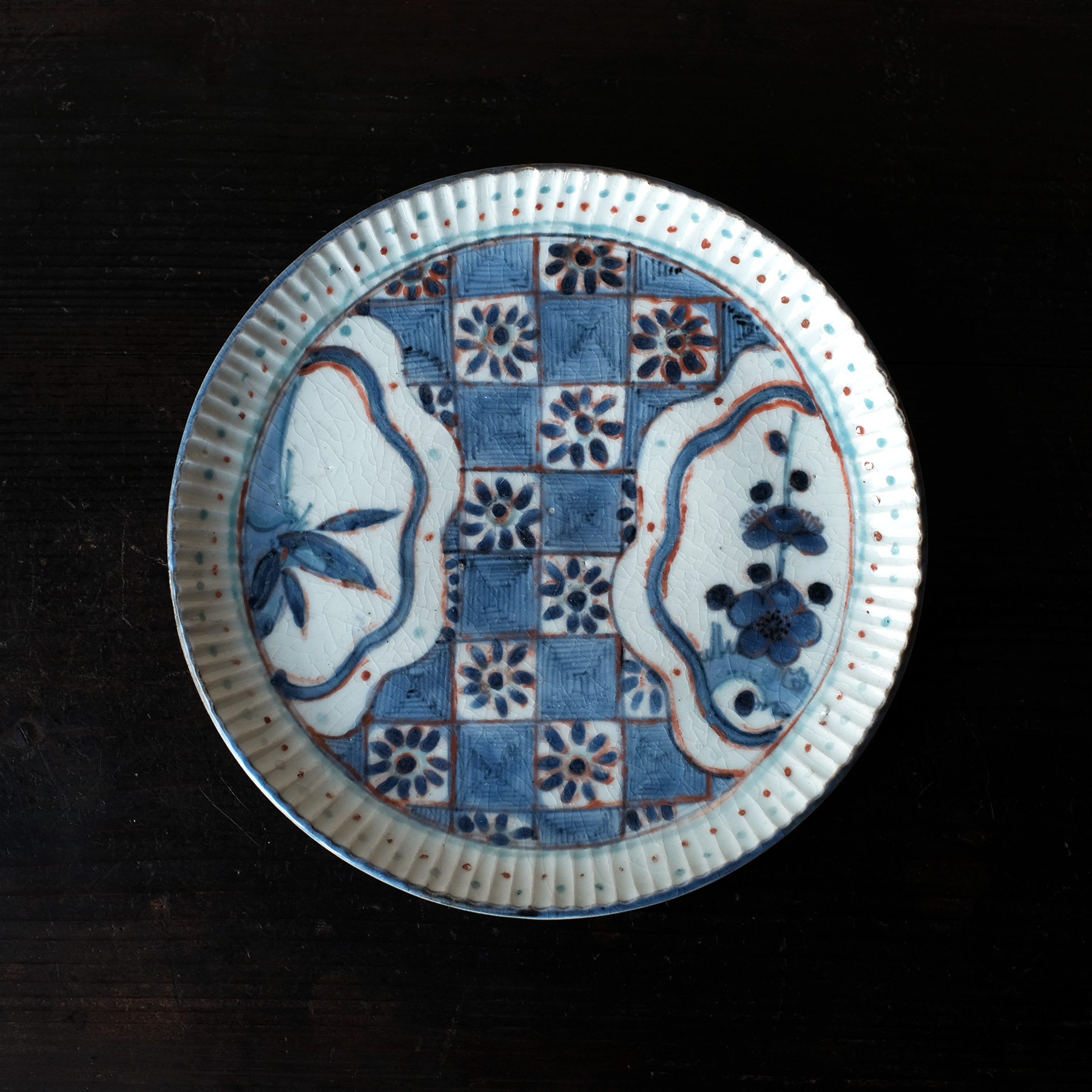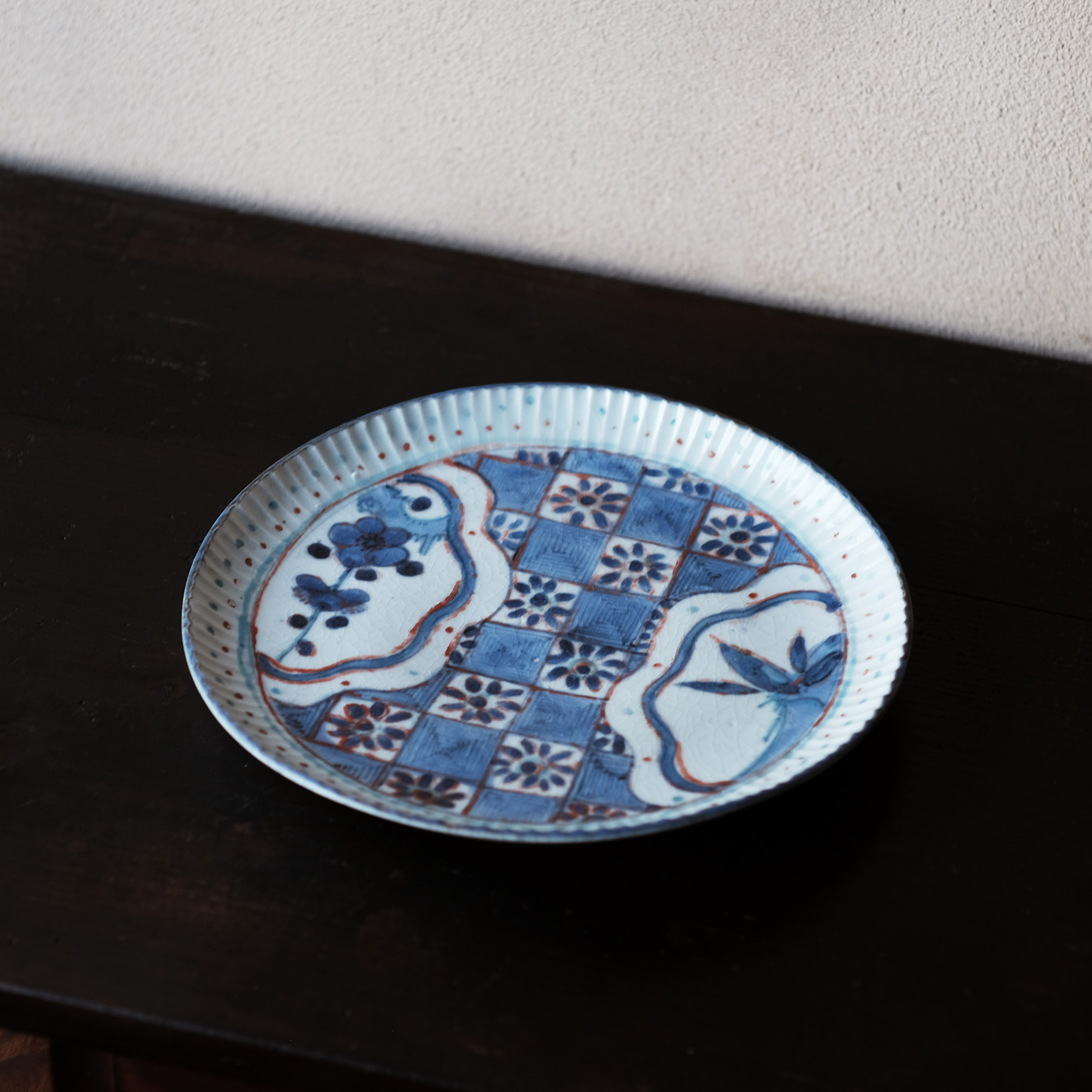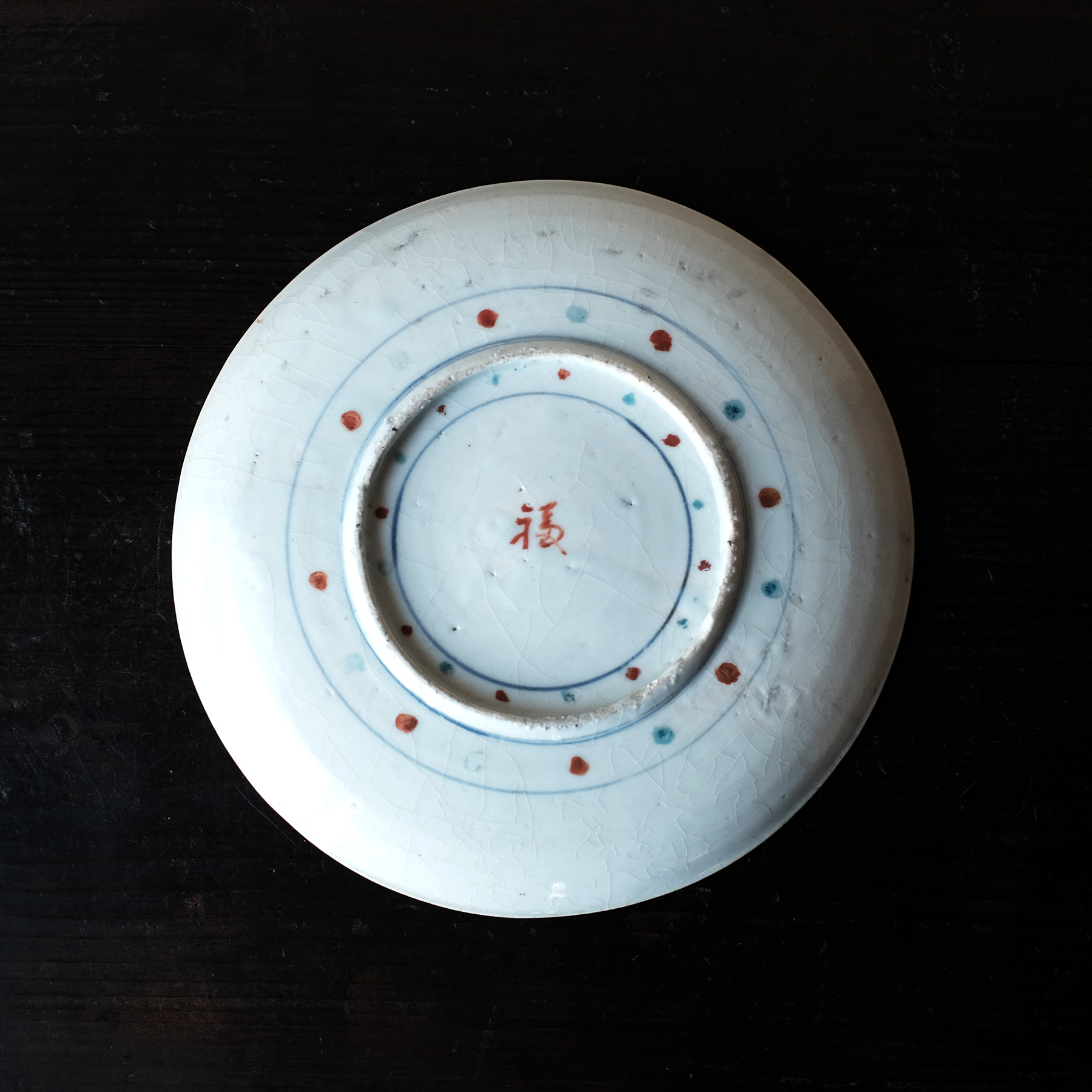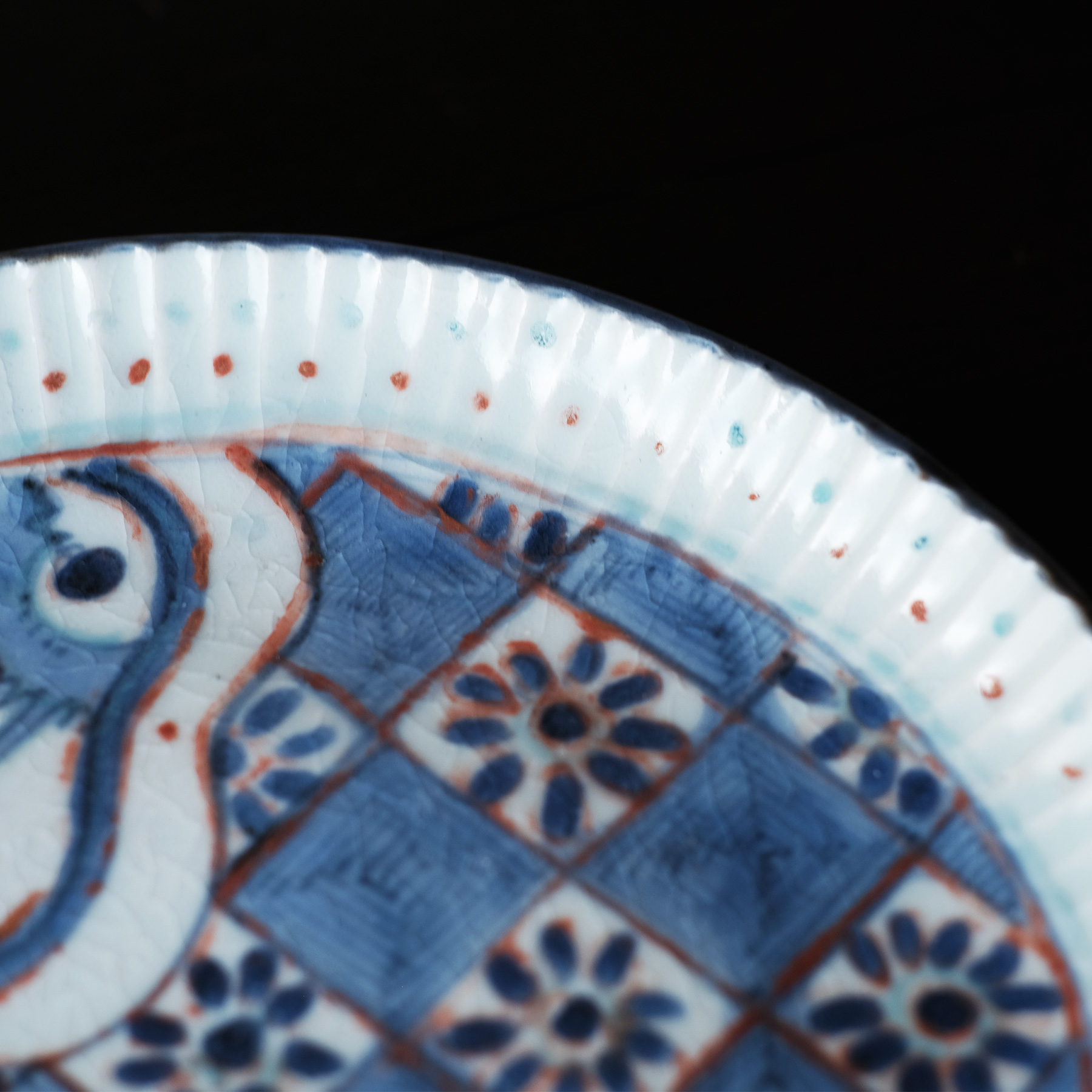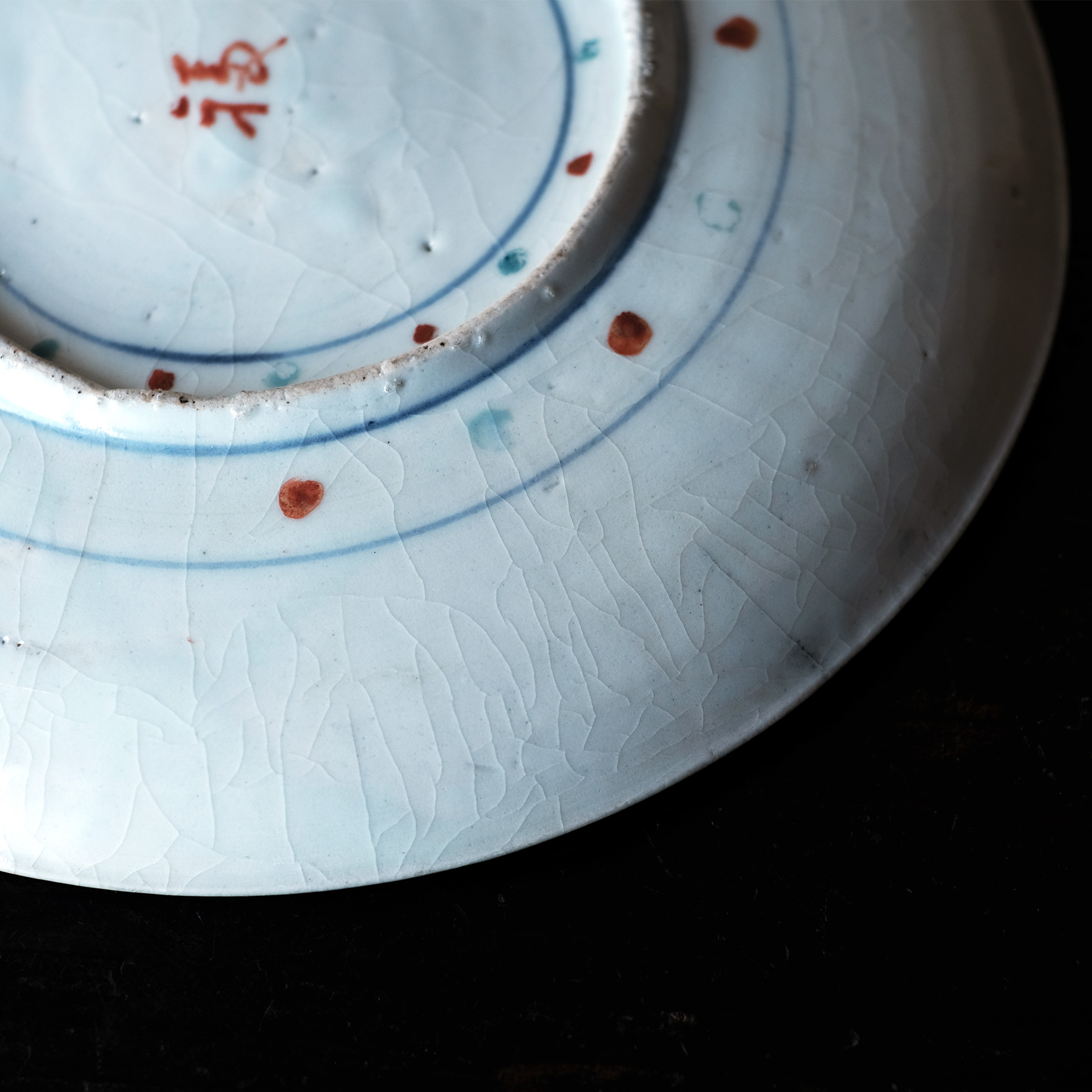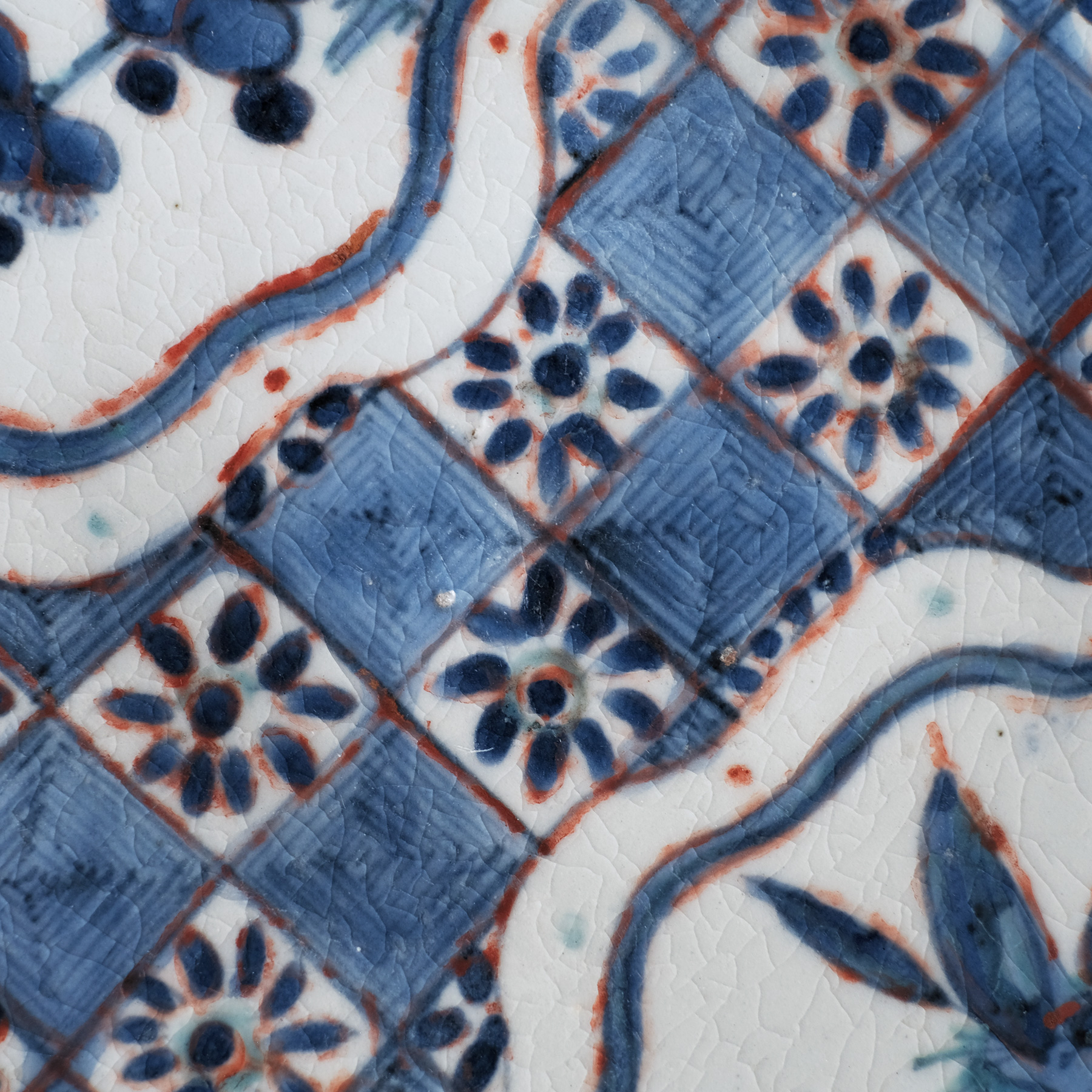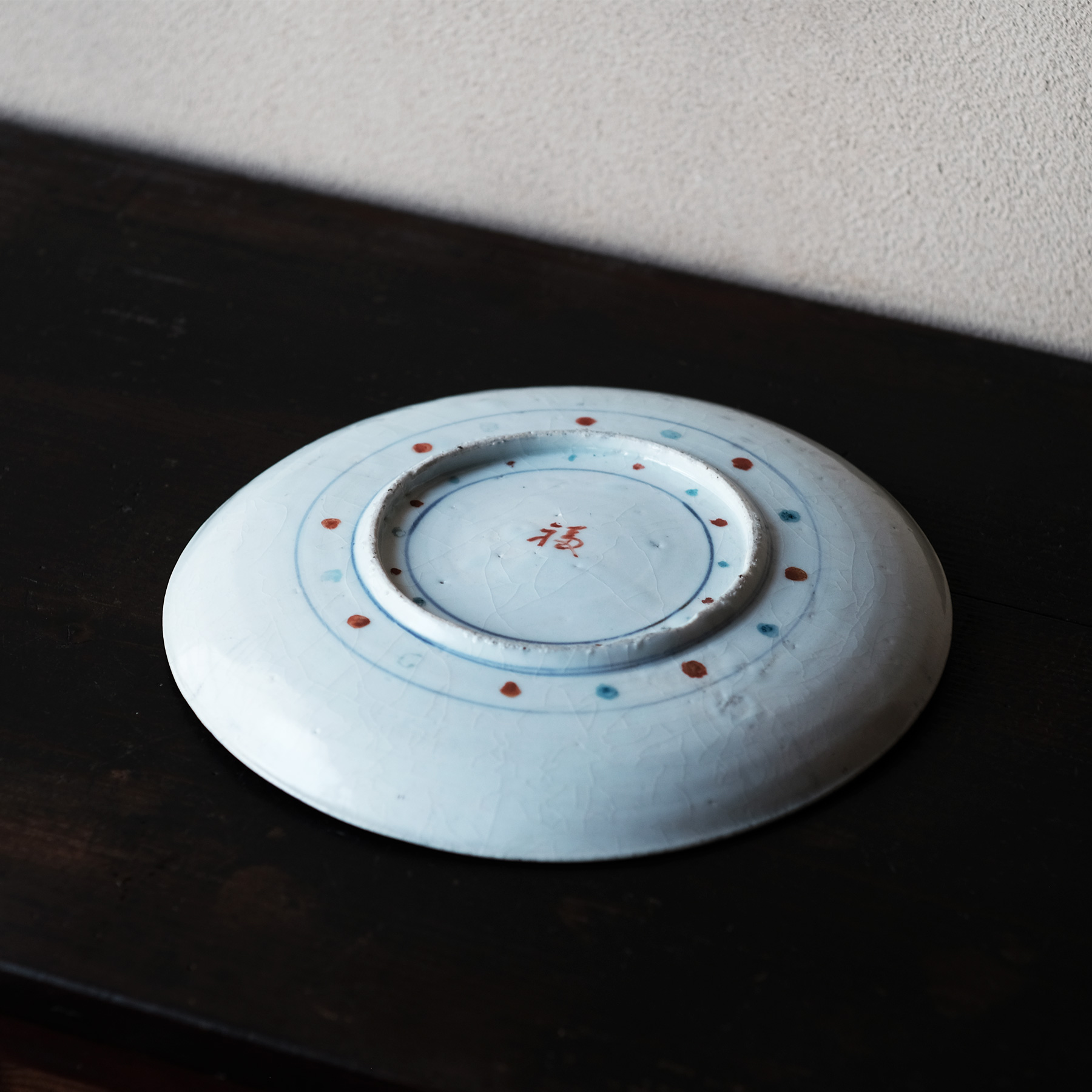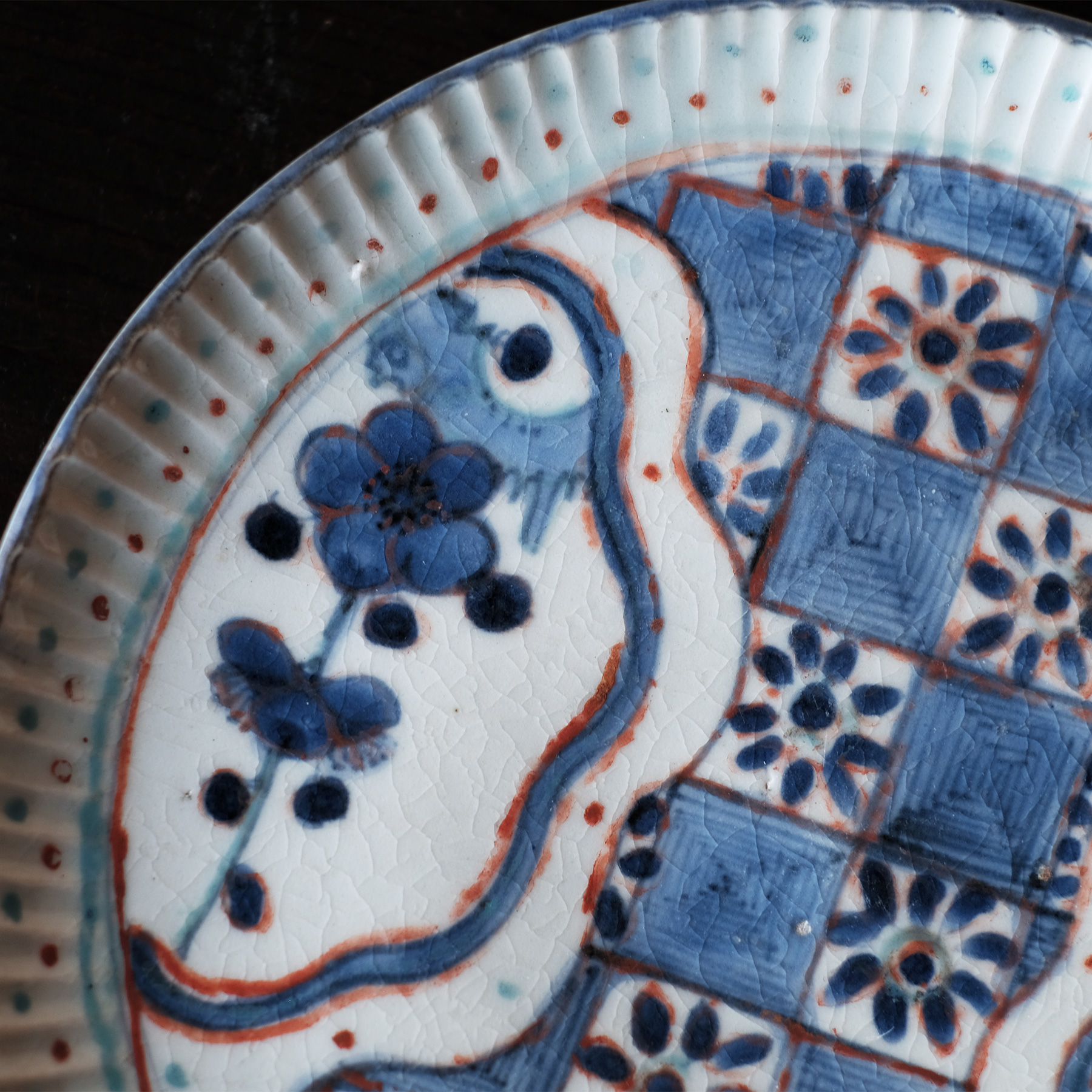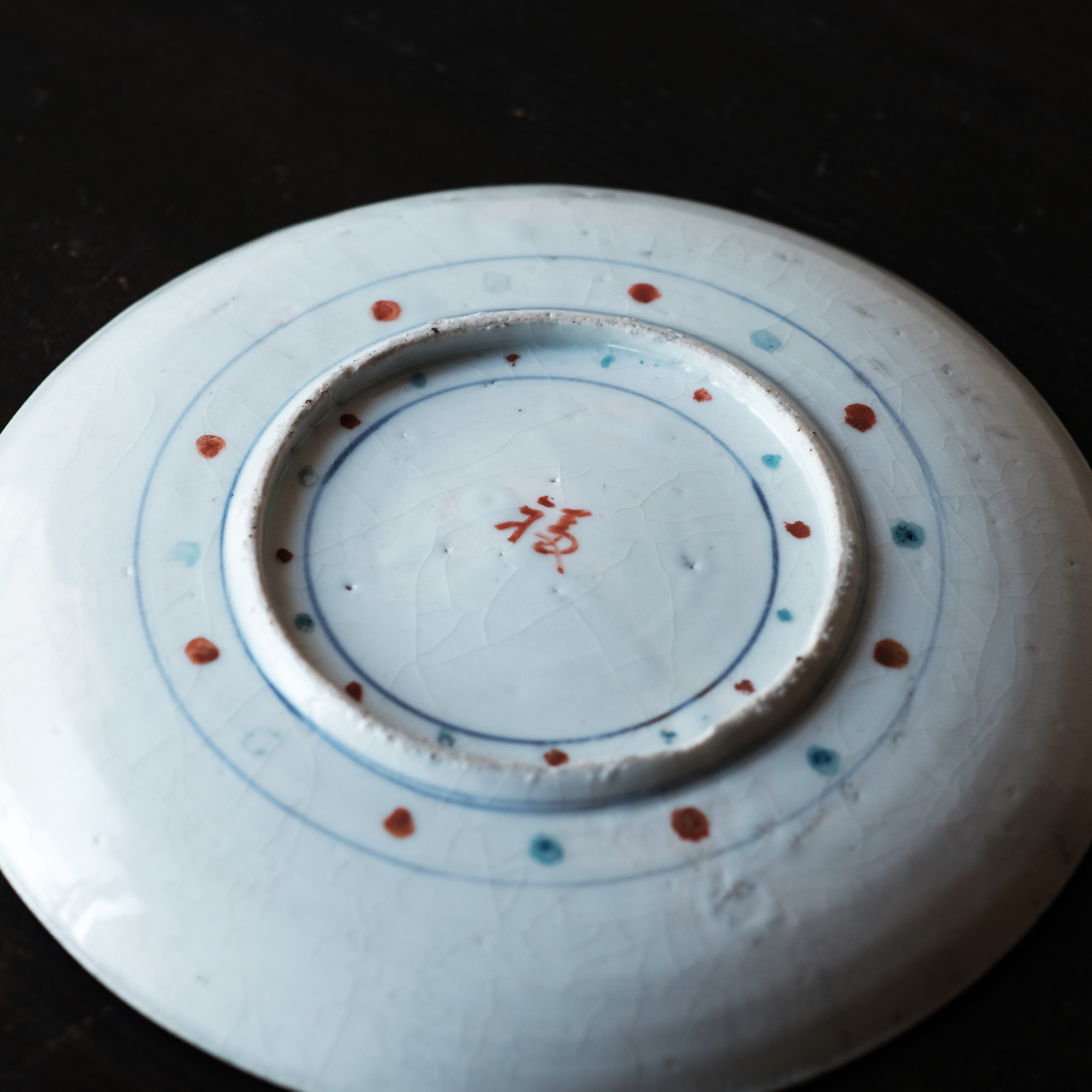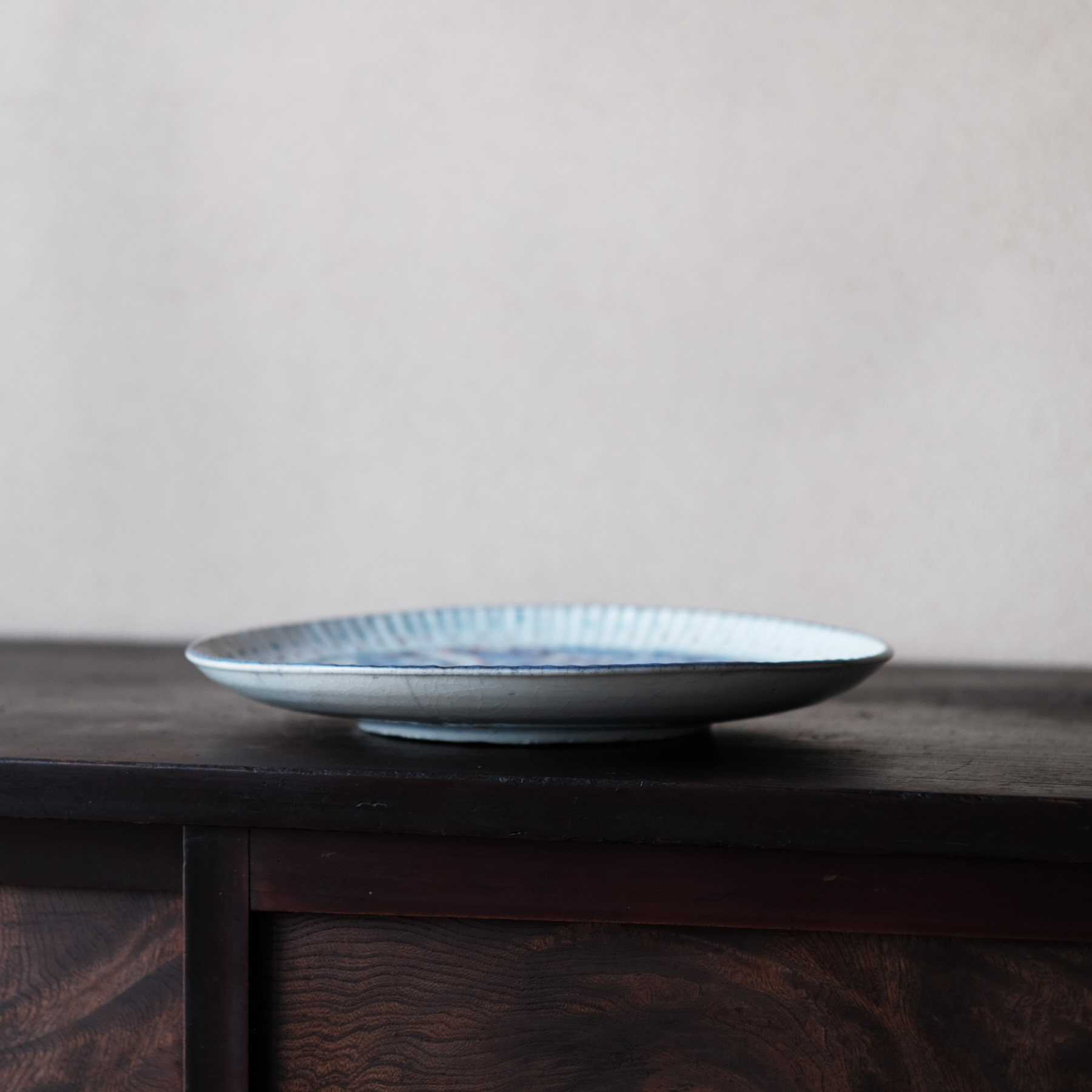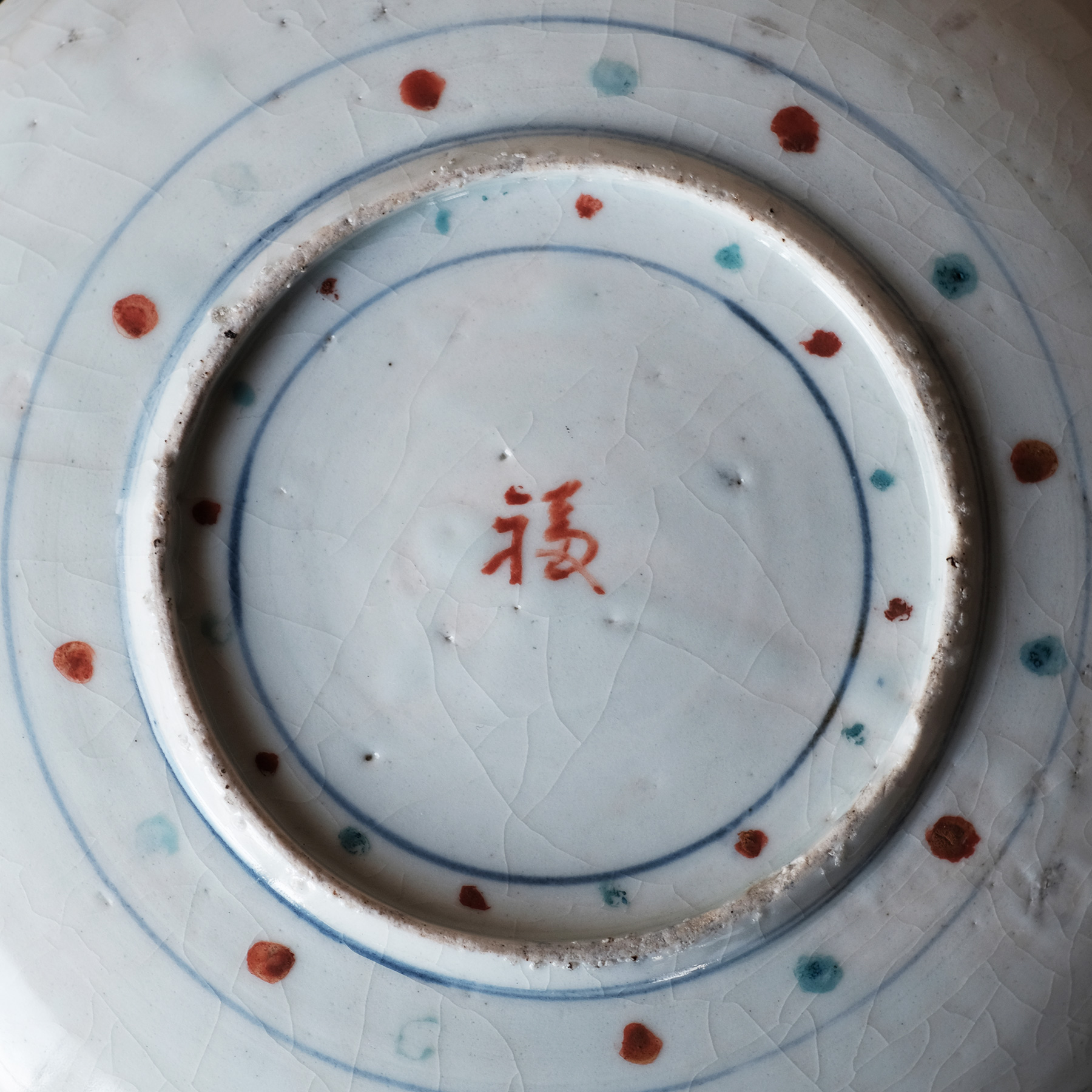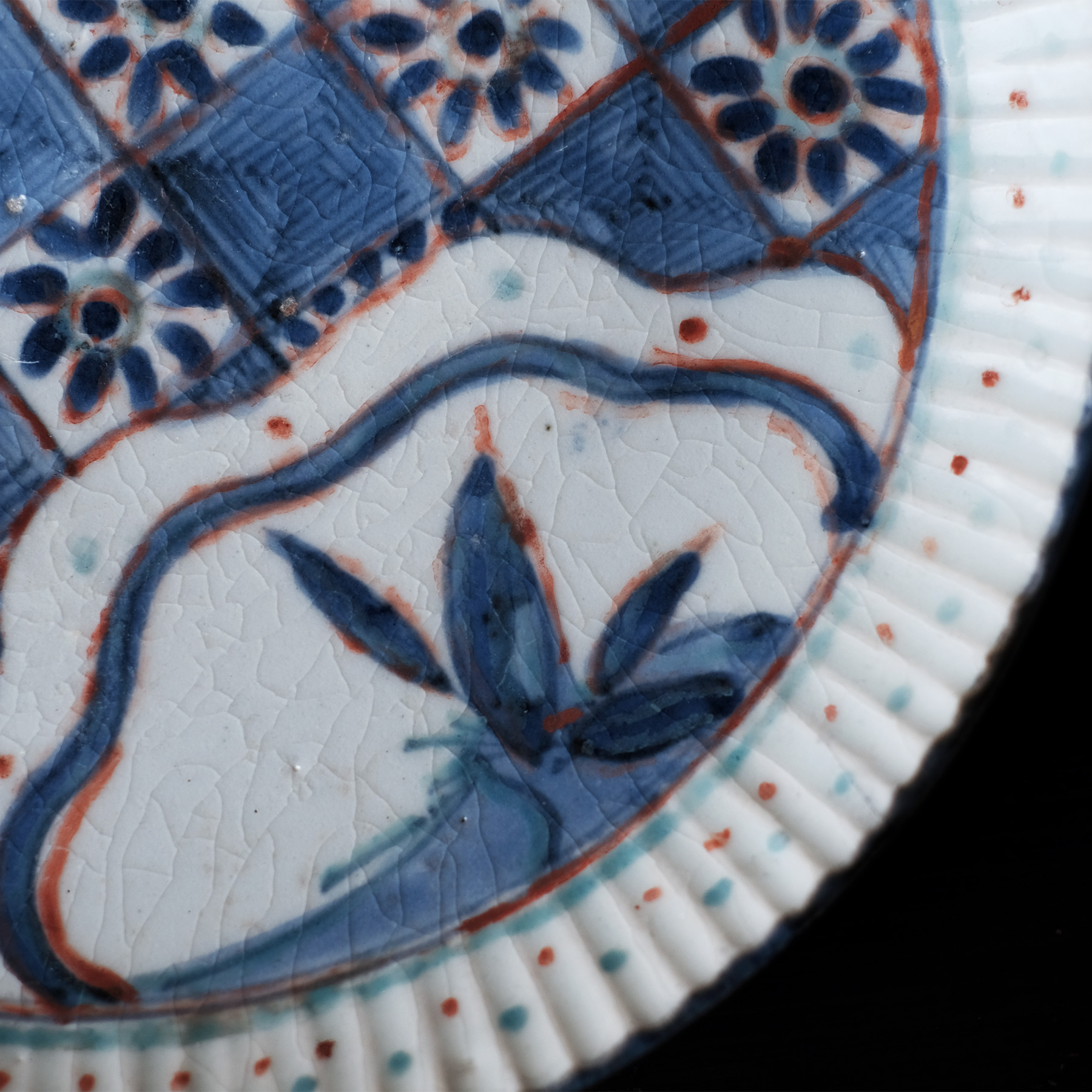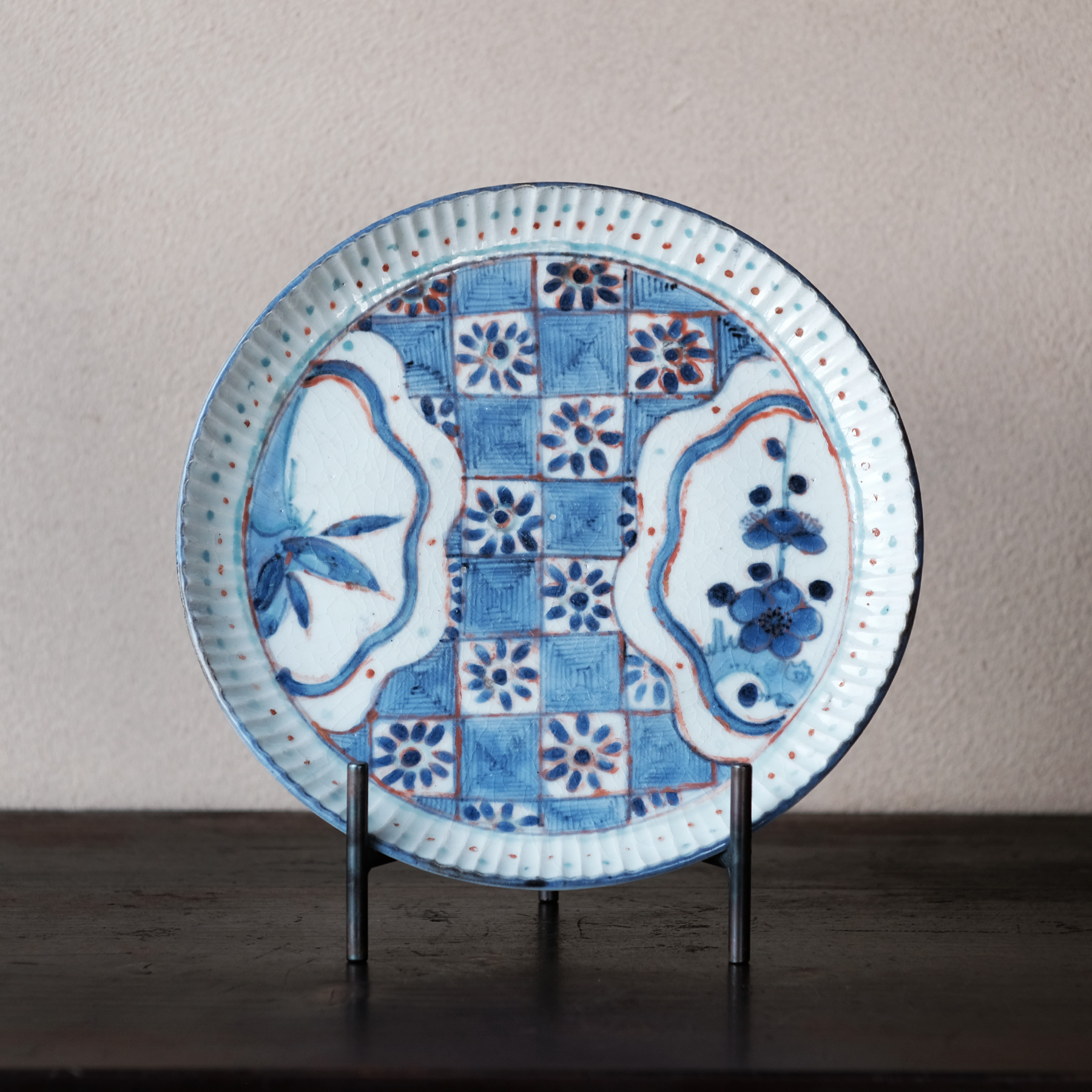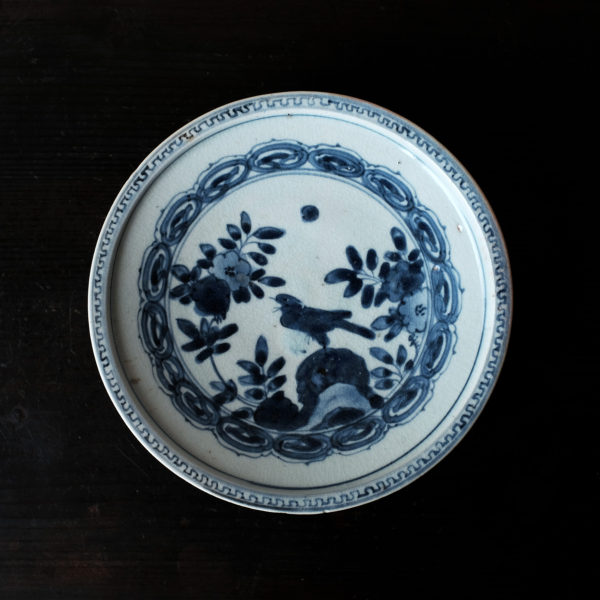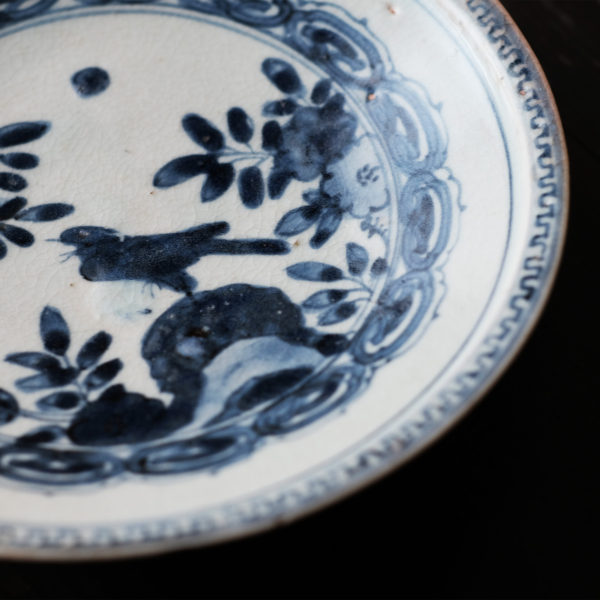Ko-Imari Ai-Kutani Type Blue and White Porcelain Dish with Overglaze Enamel Decoration
ARCHIVEDA blue and white dish with overglaze enamel, made in Arita during the 1640s to 1650s, showcases the distinctive characteristics of the Ai-Kutani type. The fluted rim, adorned with an underglaze blue edge, adds an elegant touch to the piece. On the interior, bamboo and plum blossoms are depicted within the two windows, while the remaining space is filled with a checkered flower pattern.
The dish exemplifies the transitional period from the Early Imari to the Ai-Kutani type. The geometric designs, reminiscent of Jingdezhen ware, testify to the strong influence of Chinese porcelain. The raw glazing technique is another characteristic feature of the early Ai-Kutani type that continued from the Early Imari period. Concurrently, the overglaze enamel technique is applied, which emerged during the same era. This exquisite dish captures the diversification of styles and artistic endeavors of the period, reflecting the dynamic state of Arita ceramics during this era.
Over time, some of the overglaze enamel decorations have partially peeled off, yet the crackle glaze that covers the entire dish helps conceal two or three inconspicuous short hairlines along the rim.
A similar blue and white dish with widows design and checkered flower pattern can be found in the Catalogue of Shibata collection Part II (1991), No. 32, p18.
- The description will be updated as our research progresses.
- Images may differ in color from the actual products.
- Please read "Terms" when purchasing.

